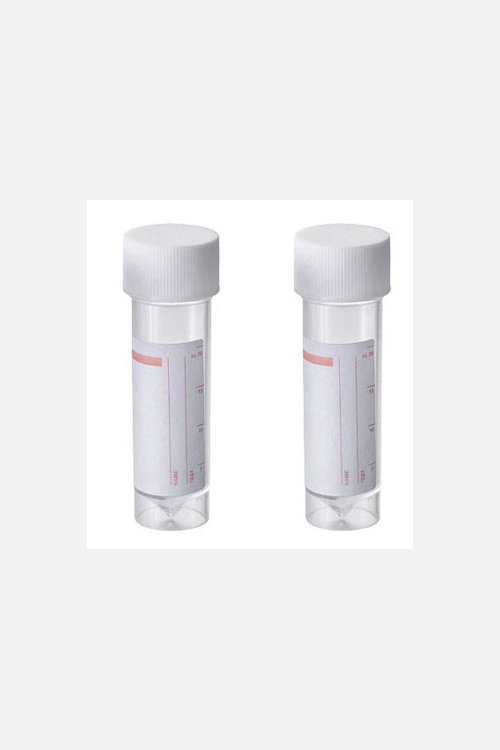
24-hour Iodine and Bromine Analysis
Unique analysis that shows the 24-hour iodine uptake and the current iodine value
measures in the body.
24-hour Iodine and Bromine analysis
The standard 24-hour iodine test gives a good picture of the iodine status of the body, but says nothing about the actual absorption of iodine into the body cells. This absorption is dependent on the functioning of the iodine transport system (NIS). When this system functions poorly, and this can have various causes, the effect of iodine supplementation will be limited. To be sure whether iodine supplementation is useful, it is important to know whether the iodine transport system is functioning properly. The ‘spot’ test in addition to this 24-hour urine test shows the normal level of excretion of Iodine / Bromine and/or Chlorine and Fluorine and what the (extra) excretion is as a result of ingesting the high dose of iodine.
POOR IODINE TRANSPORT FUNCTION RESULTS IN IODINE DEFICIENCY IN THYROID GLAND BUT NOT IN BLOOD
Why a spot measurement and a 24-hour determination
The composition of the blood is generally not a reliable indicator of the availability of vitamins and minerals in the body’s tissues/cells. A single iodine determination in a urine sample also does not provide a reliable picture of the iodine status of the body. Although the situation of most minerals can be derived from the hair (HMA), this does not apply to iodine because iodine is a halogen.
There is a secondary indicator in the form of the Calcium/Potassium ratio in the hair, also called the ‘Thyroid ratio’. An abnormal Ca/K ratio can be an additional reason to investigate the iodine status of the body.
The 24-hour iodine test was developed to determine whether the body contains sufficient iodine. This test is based on research showing that once all tissues of the body are saturated, additional iodine is excreted in the urine. However, a problem exists when a client exhibits symptoms of iodine deficiency, but the 24-hour burden demonstrates that iodine status is adequate. In many cases this is caused by the presence of other halogens and chemicals (goitrogens) in the body that block iodine absorption in the cell, artificially increasing iodine excretion. Examples include Bromide, Chloride and Fluoride which can also be measured in the 24-hour urine sample.
A good way to determine the presence of a “symporter defect” is to compare the “spot” iodine results with the 24-hour results. If after the 24 hour test there is a very high excretion (> 90% of the iodine load of 50 mg) but still a very low value is determined in the “spot” test, you can determine that it is absorbing iodine from the intestine but cannot penetrate into the cells.

BROMIDE, CHLORIDE AND FLUORIDE INHIBITS IODINE UPtake IN THE THYROID GLAND
A defective transporter function
Iodine belongs to the group of elements we call ‘halogens’. If there is an excess of bromine, fluorine or chlorine compounds (‘toxic halogens’) in the body, this can give a so-called false positive result. It then appears that the body has a better iodine status than is actually the case. This is because these halogens enter into a kind of competition with iodine and can therefore also occupy iodine receptors. In addition, they, like heavy metals, block iodine uptake in the cells.
In the Thyrocytes (cells of the thyroid gland), the sodium/iodide symporter (NIS) is located in the basolateral membrane. The peripheral iodide enters the thyrocyte via the symporter in the basement membrane, and passes through the thyrocyte as iodide to exit the thyrocyte via the apical membrane transporter just before oxidation and organification. In the case of the symporter, iodide must bind to a specific molecule called the halide symporter binding site before cellular uptake. Goitrogens compete for these binding sites which can lead to goiter due to induced iodine deficiency. Goitrogens such as fluoride and perchlorate bind to the same site as iodine without being transported into the cell. They are therefore considered iodine transport inhibitors. Bromide and thiocyanate also attach to this binding site, but in addition they are transported into the cell, preventing oxidation and ‘organification’ (the conversion of inorganic iodine to organically available iodide). As a result, iodine is not active at the cellular level.
DOWNLOAD REPORT EXAMPLE OF THE 24 HOUR IODINE ANALYSIS
Simple tests – Extensive interpretation
The iodine spot test is performed before starting iodine supplementation for the 24 hour test. The spot test is used to determine the presence or absence of severe iodine deficiency. This test is a good indicator of dietary iodine intake.
To determine the body’s need for iodine, a 24-hour urine iodine test is used. This test is based on the concept that the human body retains the ingested iodine until the needs of the entire body are met. In this test, 1 tablet of 50 mg iodine/iodide is taken prior to collecting the urine for 24 hours. The amount of iodine excreted (in iodide form) is a measure of the iodine status of the body. The more iodine is excreted, the better the iodine status. If the determination is carried out in children, it is not advisable to work with 50 mg iodide. Then contact us to make agreements about a lower dosage.
In many cases we have effective intervention methods to reactivate thyroid function.
Order the 24-hour Iodine – Bromine Analysis
The 24-hour Iodine and Bromine analysis can be ordered by therapists who, if they are registered with us, can order this analysis via our webshop. You will receive a detailed report within 2 weeks of receiving the samples.
The 24-hour Iodine and Bromine analysis can also be ordered by consumers who are actively concerned with their health and vitality and are not under treatment by a therapist. The report is written in a simple language. The report contains preliminary intervention advice; After all, we don’t know your background. Our therapists can of course do this if they have more information about you.
[1]Goïtrogenen zijn van nature voorkomende fytonutriënten. Ze zijn vooral aanwezig in sojaproducten en rauwe crucifere groenten als broccoli, (bloem)kool en spruitjes. Goïtrogenen kunnen in overmaat de schildklierfunctie benadelen. Rauwe crucifere groenten hebben als nadeel voor de schildklier dat ze de jodiumopname verminderen. Bron: natuurdietisten.nl

